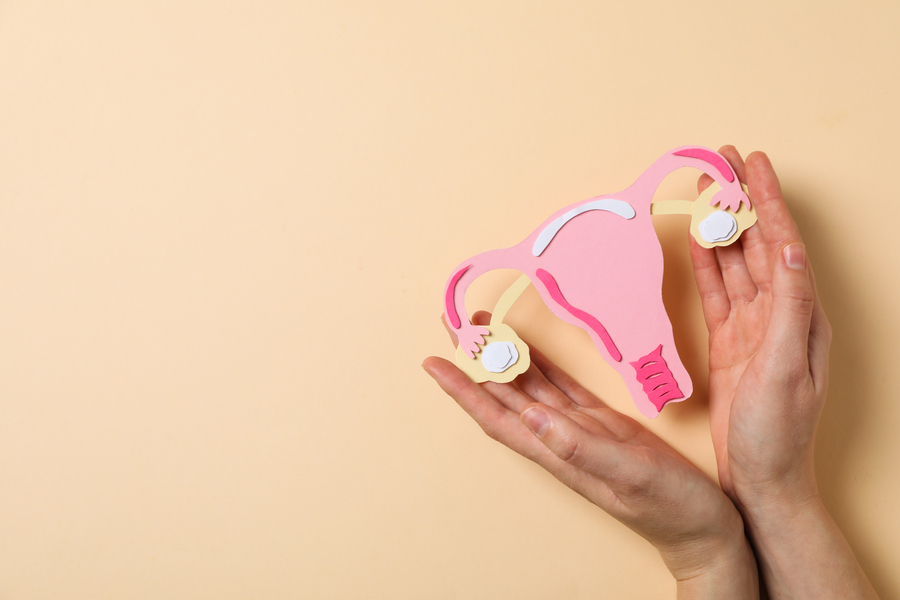We discussed the pre and post menopause signs as well as common symptoms of menopause in Part I. We will continue with more symptoms of menopause in this blogpost.
Urinary problems
Declining estrogen levels affects the vagina and the supporting tissue between the vagina and the bladder too. In women, the genitourinary tract has multiple receptor for estrogen and the stability and integrity of the connective tissue is dependent upon estrogen to maintain its tone and vascularity.
Declining estrogen levels during the perimenopause and beyond means that the genitourinary tract tissues start to undergo atrophy becoming more and more lax and dry as the woman ages. This predisposes the woman to recurrent urinary infections, urgency and frequency. Often urgency and urge urinary incontinence make a new appearance in this period.
Waking up frequently at night because of hot flushes and urinary frequency causes further problems for day time cognitive function and irritability.
You may find it helpful: Understanding Menopause: Symptoms, Health Concerns, and Management Strategies – Part I
Recurrent infections, urgency and incontinence can adversely affect intimacy and sexual relationships, self confidence and self esteem and may result in isolation and withdrawal from social interactions.
Old pelvic floor injuries sustained during vaginal delivery can get worse due to laxity and poor tone resulting in worsening of stress urinary incontinence and prolapse of the vaginal tissues. Sometimes the urinary symptoms can be accompanied by fecal and flatus urgency and incontinence.
Treatment of urinary problems usually calls for a thorough physical assessment and confirming the cause of urinary infections by performing urine microscopy and culture tests. Assessment of vaginal prolapse and the type of urinary incontinence is also important.
Sometimes the patient is requested to document the urinary frequency, urgency and incontinence in the form of a bladder diary kept for a minimum of 24 hours.
Treatment is usually initiated with pelvic floor exercises, bladder retraining, fluid regulation and if required medication can be used. For urinary incontinence several types of continence devices are now available in the market and these can be used till a more permanent solution is found.
Vaginal estrogen is safe and effective in the adjuvant management of recurrent urinary tract infections and in building tissue strength prior to vaginal surgery.
A special ultrasound examination can be done to assess the status of the bladder, any retained urine, descent of the bladder neck and additional prolapsed. This provides additional information about the status of the urinary tract and its relationship with the pelvic organs with or without prolapsed.
Urodynamic testing is an additional tool that is useful before surgery is planned. This test checks the pressures in the bladder, urine flow rates, and changes with coughing or movement and leakage of urine can be documented.
It can help predict success of surgery and any anticipated complications can be discussed depending upon the findings.
Surgical treatment for stress urinary incontinence not responsive to pelvic floor exercises is usually in the form of suburethral sling surgery (TVT or TOT). Laparoscopic Burch colposuspension or open colposuspension is reserved for those with multiple anterior compartment defects or previous failed sling surgery.
Pelvic organ prolapse
Recommended read: Pelvic Floor Dysfunction and Menopause
Pelvic organ prolapse is the downward displacement of the pelvic organs with the vagina and they may or may not protrude outside the vaginal opening. The woman may have symptoms of something coming outside the vaginal entrance that gets worse as the day progresses or after prolonged standing or straining or coughing.
This may or may not be accompanied with urinary leakage, constipation or leakage of flatus and feces. Rarely if the prolapse is severe it may result in obstruction of the urinary and fecal passages causing retention and pain.
A dragging sensation and low backache is a common complaint in women with prolapse. Rarely the descending part protrudes through the vagina and if left unchecked can sustain chaffing and damage when rubbing against underwear. This can then ulcerate resulting in bleeding, foul smell and discharge. The woman may report that she is only able to pass urine or stool after manually replacing the prolapsed organs. Feces may need to be removed manually as well.
The prolapse is assessed by physical examination. A pelvic organ prolapse documentation tool called the POP-Q is useful in objectively documenting the descent of the various parts of the pelvic compartments. This is reproducible among different clinicians and gives an objective evaluation of the prolapse and surgery needed to correct the defects.
Other physical ailments such as chronic cough and constipation need to be treated before surgery is undertaken otherwise the problem will recur. An ultrasound examination is usually done to assess the status of the pelvic organs and to rule out any other cause for the prolapse.
Sometimes an assessment of the cells of the cervix is also undertaken to rule out any abnormal changes that could lead to a change in the surgical approach.
While you experience and assess the above-mentioned menopause symptoms, it’s important to prioritize self-care, seek support, and follow holistic approaches to your wellness.
I suggest acknowledging the menopause with complete acceptance and have an open dialogue with your doctor and your friends so you can feel easy to navigate this transitional phase with resilience, dignity, and a renewed sense of vitality.
Readers’ favorite:
Menopause Treatment – How to Make it Work for You
What is Genitourinary Syndrome of Menopause and Which Symptoms Bother Women the Most?
Do write to me at masterthemenopause@gmail.com about what you liked in this article and whether it helped you address some of your concerns.

